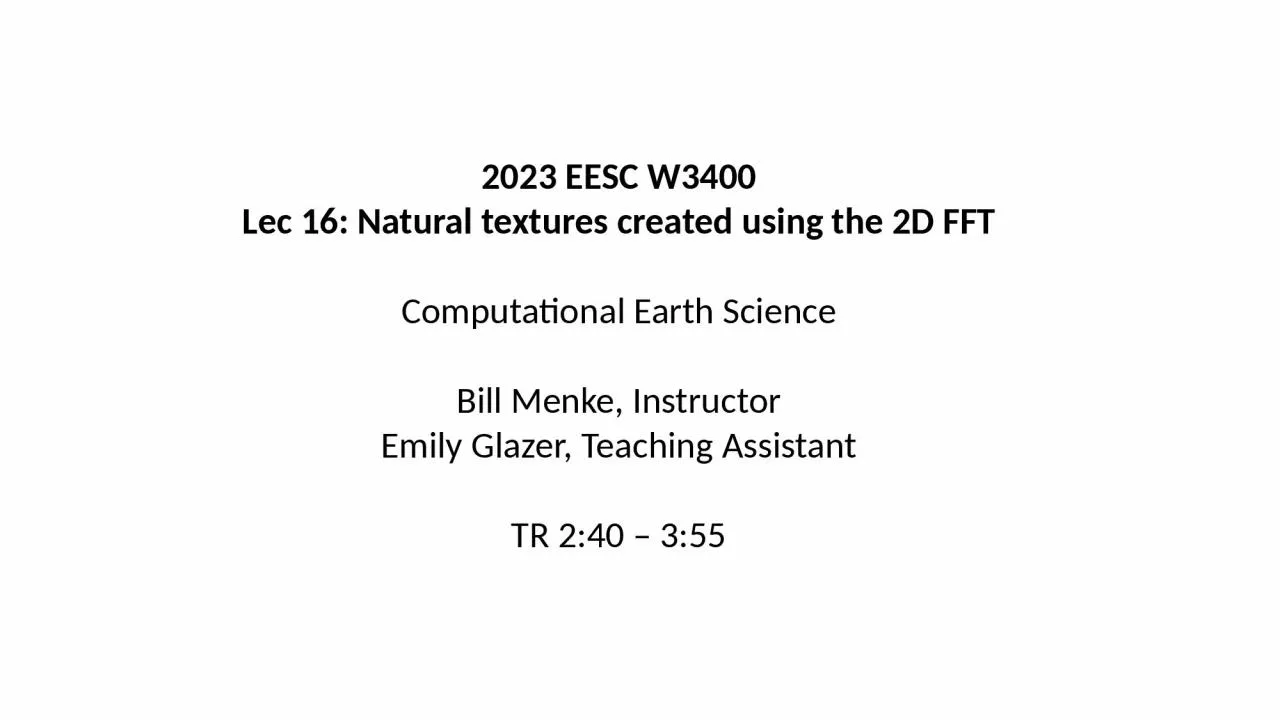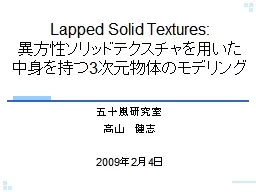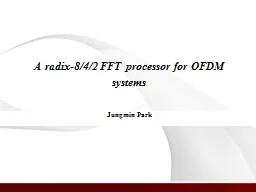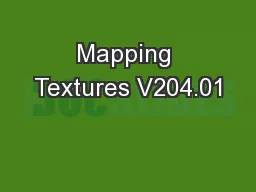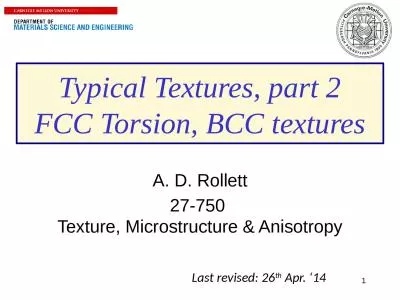PPT-2023 EESC W3400 Lec 16: Natural textures created using the 2D FFT
Author : isabella | Published Date : 2024-03-15
Computational Earth Science Bill Menke Instructor Emily Glazer Teaching Assistant TR 240 355 Today Use of the Fast Fourier Transform in Modeling random textures
Presentation Embed Code
Download Presentation
Download Presentation The PPT/PDF document "2023 EESC W3400 Lec 16: Natural texture..." is the property of its rightful owner. Permission is granted to download and print the materials on this website for personal, non-commercial use only, and to display it on your personal computer provided you do not modify the materials and that you retain all copyright notices contained in the materials. By downloading content from our website, you accept the terms of this agreement.
2023 EESC W3400 Lec 16: Natural textures created using the 2D FFT: Transcript
Download Rules Of Document
"2023 EESC W3400 Lec 16: Natural textures created using the 2D FFT"The content belongs to its owner. You may download and print it for personal use, without modification, and keep all copyright notices. By downloading, you agree to these terms.
Related Documents

